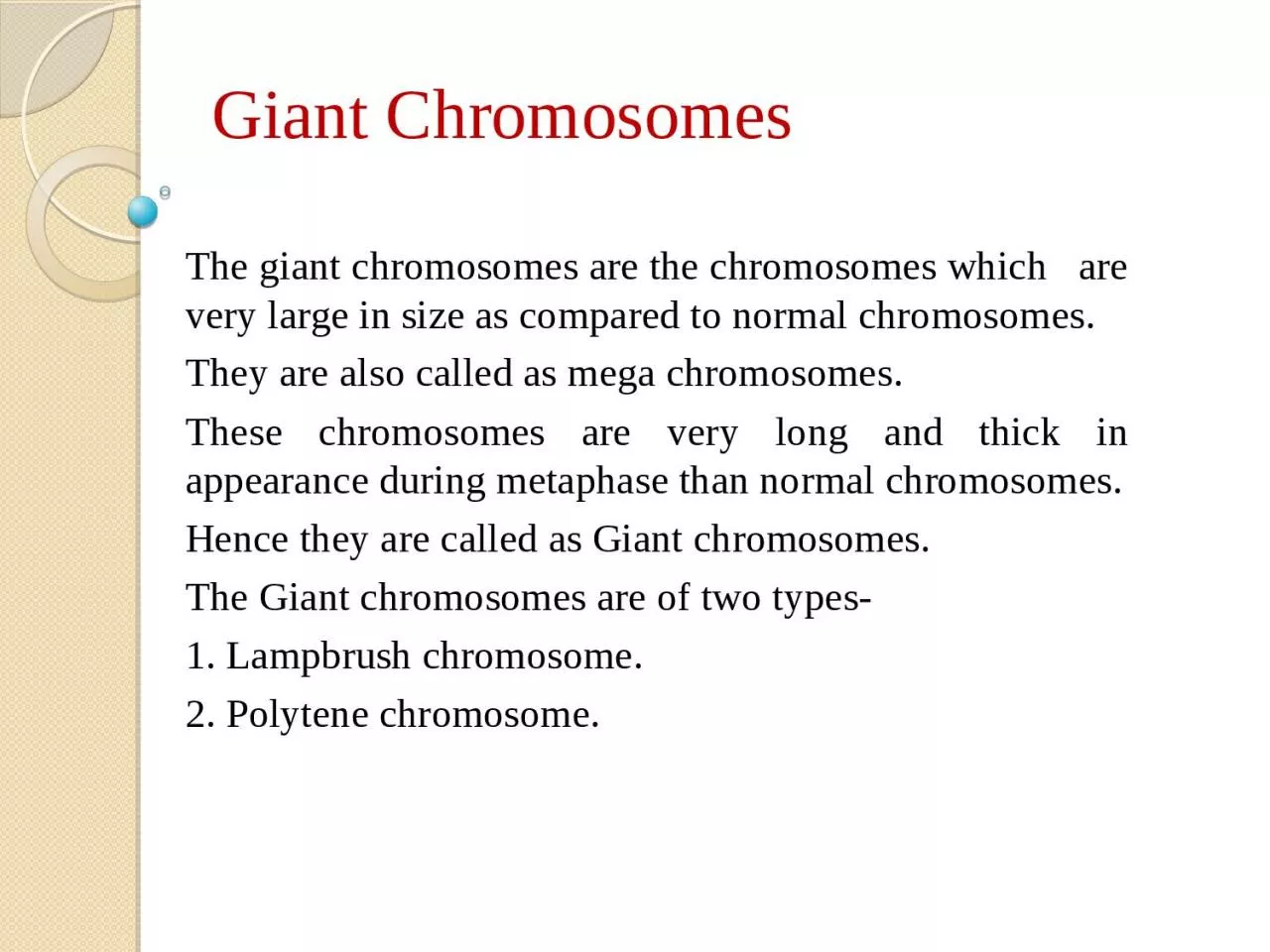PPT-Giant Chromosomes The giant chromosomes are the chromosomes which are very large
Author : elyana | Published Date : 2023-07-08
They are also called as mega chromosomes These chromosomes are very long and thick in appearance during metaphase than normal chromosomes Hence they are called
Presentation Embed Code
Download Presentation
Download Presentation The PPT/PDF document "Giant Chromosomes The giant chromosom..." is the property of its rightful owner. Permission is granted to download and print the materials on this website for personal, non-commercial use only, and to display it on your personal computer provided you do not modify the materials and that you retain all copyright notices contained in the materials. By downloading content from our website, you accept the terms of this agreement.
Giant Chromosomes The giant chromosomes are the chromosomes which are very large: Transcript
Download Rules Of Document
"Giant Chromosomes The giant chromosomes are the chromosomes which are very large"The content belongs to its owner. You may download and print it for personal use, without modification, and keep all copyright notices. By downloading, you agree to these terms.
Related Documents














